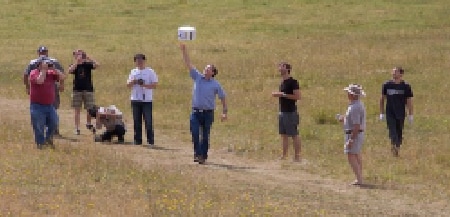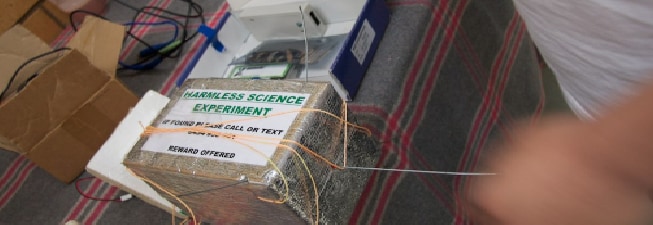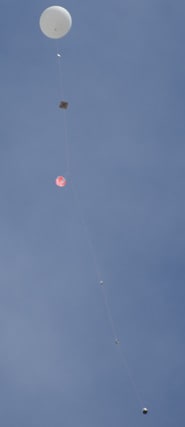i-INSPIRE

Led by Professor Iver Cairns (Space Physics), Professor Joss Bland-Hawthorn (Astrophotonics, SIfA) and Dr Xiaofeng Wu (AMME), the i-INSPIRE team includes early career academics, graduate and undergraduate students, and I.T. experts with space experience. The team intend i-INSPIRE to be the first satellite designed and built entirely by staff and students within an Australian University.

The i-INSPIRE satellite ready for its first Balloon flght
Our research
i-INSPIRE stands for initial Integrated Spectrograph Imaging and Radiation Explorer. Through leadership and expertise from the University of Sydney, it will demonstrate satellite capability, novel instrumentation and global radiation, space weather and spectrograph radiation testing.
Led by Professor Iver Cairns (Space Physics), Professor Joss Bland-Hawthorn (Astrophotonics, SIfA) and Dr Xiaofeng Wu (AMME), the i-INSPIRE team includes early career academics, graduate and undergraduate students, and I.T. experts with space experience.
The team intend i-INSPIRE to be the first satellite designed and built entirely by staff and students within an Australian University.
The i-INSPIRE spacecraft team reported a successful balloon flight to 27 km altitude with the aid of Project Horus, experts in high latitude balloon launches. The test occurred on Sunday 25 November 2012 near Adelaide for the engineering model of i-INSPIRE.
The successful balloon launch is a small, but crucial, step in convincing our international collaborators that we are able to design and build instruments that can operate at extreme altitudes.
Future research for the i-INSPIRE research team include more balloon flights in the near future. In addition, i-INSPIRE is scheduled for launch into space in the fourth quarter of 2013 or the first quarter of 2014.

The i-INSPIRE spacecraft team reported a successful balloon flight to 27 km altitude with the aid of Project Horus, experts in high latitude balloon launches. The test occurred on Sunday 25 November 2012 near Adelaide for the engineering model of i-INSPIRE.
The successful balloon launch is a small, but crucial, step in convincing our international collaborators that we are able to design and build instruments that can operate at extreme altitudes.
Future research for the i-INSPIRE research team include more balloon flights in the near future. In addition, i-INSPIRE is scheduled for launch into space in the fourth quarter of 2013 or the first quarter of 2014.

The payload weighs less than 700 gm, i-INSPIRE carries a new type of spectrograph called Nanospec, which is based on photonic technology. This makes it much lighter and more energy efficient than conventional spectrographs, an imager, and multiple satellite subsystems.
A full set of Nanospec and imager data was obtained via the spacecraft’s successful autonomous operation. i-INSPIRE continued to transmit its beacon and take data even after landing.
The i-INSPIRE team have close collaborations with NASA Goddard and the Kavli Institute Santa Barbara who are heavily involved in space launches. They see the program as both novel and interesting.
Australians are leading the way in the development of a new generation of ultra-compact, high performance, photonics-based instruments. The i-INSPIRE and future developments, tests and launches will enable the team to take part in the European Union’s QB50 Project and the Marabibi Constellation project in the 2010 Decadal Plan for Australian Space Science.

Our staff
- Professor Iver Cairns, Lead
- Professor Joss Bland-Hawthorn, NanoSpec lead
- Dr Xiaofeng Wu, Spacecrafts and systems lead
- Associate Professor Joseph Khachan, Radiation counter lead
- Dr Tony Monger
- Dr Lisa Fogarty
- Dr Sergio Leon-Saval
- Jeremy Soh
- Jiro Funamoto
- Adrian Xiao